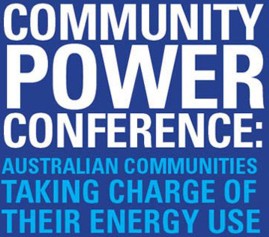 The penetration of rooftop solar in Australia tells the story of just how keen consumers are to generate their own electricity. But some are going a step further by managing the flow of their own energy usage through microgrids and smart grids.
The penetration of rooftop solar in Australia tells the story of just how keen consumers are to generate their own electricity. But some are going a step further by managing the flow of their own energy usage through microgrids and smart grids.
“Once a household or business has a solar panel on the roof, or a home storage battery, they are no longer a passive consumer,” says Mark Coughlin
, a PwC utilities expert.
“This has major implications for existing industry heavyweights, investors, governments and regulators.”
Empowered by technology, and with a huge appetite for self-sufficiency, these consumers are reorganising their usage, lessening their exposure to peak charges and, in some cases, challenging the distributors at their own game.
In Bendigo, in Victoria’s north-west, a group of local businesses has come up with their own community-run power station network to do just that.
Facing another costly upgrade to the region’s transmission network, a group of 10 manufacturers organised themselves into their own smart grid to voluntarily cut usage and alleviate the capacity constraint.
“One of the thing that kills us is the network tariff,” says Derek Shotton, whose chook breeding business Hy-Line Australia is one of the parties involved. “It’s been a big issue for industry in the region because about half of our power bills are network charges.”
The group, which includes Bendigo Hospital as well as the local water utility, foundry and council, made a plan to manage their collective electricity use in a way that eases peak demand on the hottest days of the year.
“Peak demand only happens for a couple of hours a day on a few days in the year – last summer it was just five days. So it seems a lot of expense to go to upgrade the network just to cover that peak load,” says Garth Keech who runs Bendigo’s Keech Australia foundry.
He has agreed to hold off melting in his arc furnaces during peak usage, instead shifting production back by three to four hours or overnight.Efficiency equals revenue
Paul Budde, executive director of Smart Grid Australia, says a properly functioning smart grid, combining technology and load shifting, can have a 30 to 40 per cent more efficient use of the overall electricity network.
In Bendigo’s case, that efficiency may translate into revenue for those firms that have agreed to the curtailment.
“Instead of going to the big end of town, the money comes to the regions – [to] businesses that are, like us, providing services and employment,” says Jon Anstey, strategy manager at local water utility Coliban Water.
These sorts of direct, community challenges have been enabled by the new investment test introduced by the Australian Energy Regulator in January, whereby any planned upgrade to the network must first be put out to an open tender inviting alternative bids.
“The alternatives to this bid are an upgrade to the transmission line or an increase in generation capacity – both of which fail to utilise existing assets,” says Phil Blythe, director of GreenSync, the energy management firm that helped co-ordinate the Bendigo bid.
“That proposed capital spending on the network is occurring at a time when energy usage across Australia has actually been in decline.”
If the community-based bid is accepted, parties to it will be compensated by the Australian Energy Market Operator via an annuity payment for their ongoing readiness to switch off.
“If we can get this to work, it’s a damn sight better them spending $250 million to upgrade lines that is then going to get passed on to our business as even higher network charges,” Shotton says.Technology just the beginning
Blythe believes the same self-sufficiency impulse that has driven the solar revolution helps explain the popularity of GreenSync’s demand management plan. Expressions of interest were oversubscribed by 20 per cent and he expects community-led bids will catch on.
GreenSync’s technology, which uses cloud-based automation to manage machinery and electricity during high-demand events, is mainly focused on industrial consumers. But Blythe hopes it will eventually have residential applications, allowing more consumers to compete directly with networks to lessen their exposure to tariffs.
“It really gets down to empowerment – people having options and not just accepting price hikes,” he says.
The combination of consumers taking charge combined with new technologies is proving to be massively disruptive for power utilities and their traditional operating model, PwC’s Coughlin says.
In Germany, for instance, he says customers choosing to go off the grid, combined with generation overcapacity, has seen utilities lose more than €500 billion ($730 billion) in enterprise value. Some major gas-fired power plants have been mothballed.
“No longer is it all about the old-style utility system where there was a one-way flow of energy through poles and wires down to the home,” Coughlin says. “Smart grids, smart meters and customer energy-management gadgets are only the beginning of what is possible.”
